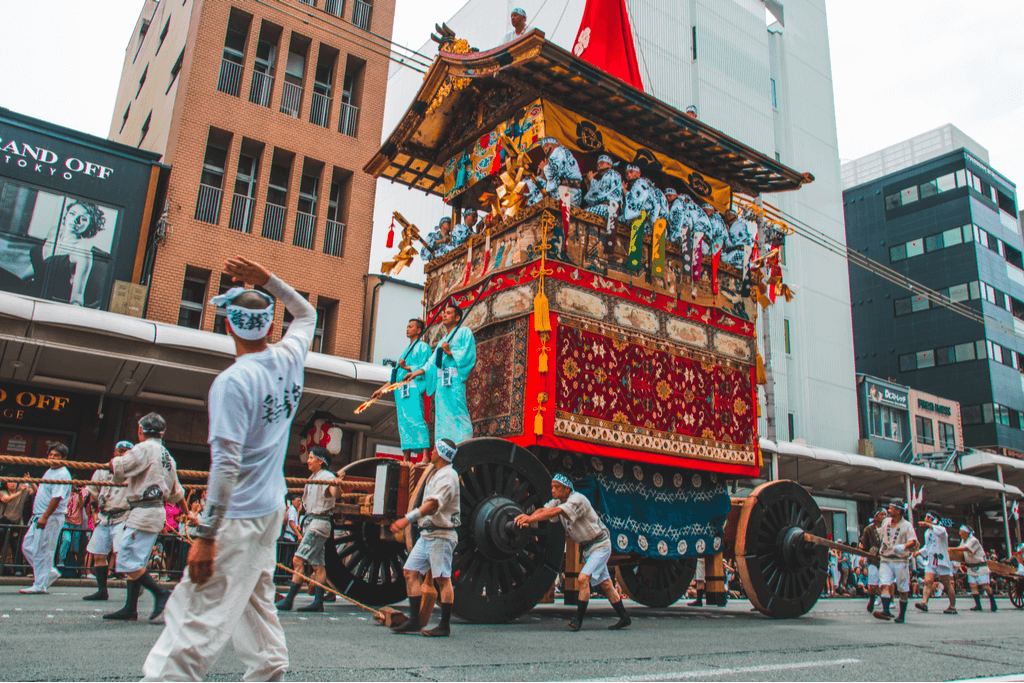Kyoto has plenty of traditional events, but Gion Matsuri is definitely the most popular natsu matsuri (summer festival) event in Kyoto. This popular festival is a month-long and held in July. Main events such as Yoiyama (night street party), Yamaboko Junko (float parades), and the Mikoshi (portable shrine) processions are typically held between the 14th and 24th of July. The festival has been running for 1100 years, surviving many wars.
In this article, let’s explore the history and highlights of this festival. This time, we will be going over the Kyoto Gion Matsuri specifically, but know that there are regional variations of this traditional festival.
Table of Contents
ToggleHistory of Gion Matsuri
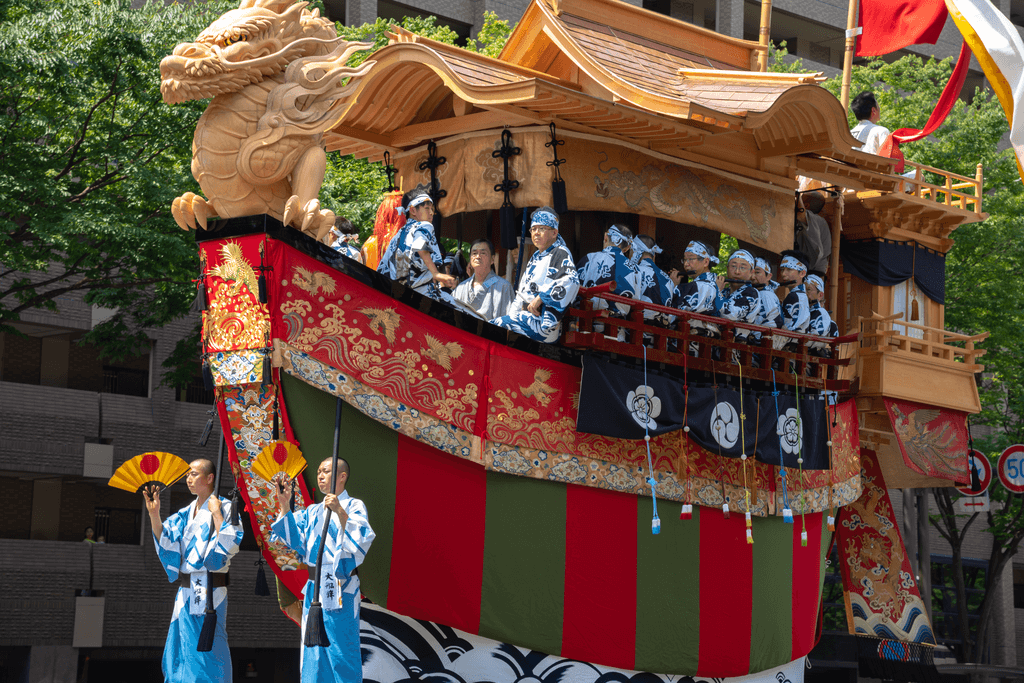
Many years ago, it was believed that angry spirits (goryō) were spreading illness and causing trouble to people living in Kyoto. Before the Gion Matsuri, there was goryō-e, a type of Shinto ritual to appease angry spirits and calm the souls of the departed.
Following a significant eruption of Mt Fuji in 864 AD, the major Jōgan earthquake in 869, and many people dying due to the plague, Emperor Seiwa ordered his messengers to hold a large-scale goryo-e at Gion-sha (presently known as Yasaka Shrine).
At this goryo-e, 66 halberds, each representing a province of Japan at the time, were planted in the imperial garden on the 7th month and 6th day of the lunar calendar. After the ritual, the halberds were carried into the city accompanied by large brocade parasols and entertainment.
The goryo-e, which came to be known as the Gion Goryo-e, was deemed a success, so Emperor Seiwa decided to hold the ritual annually. The Shinto ritual started to become more of a festival in the 1380s when the artists and merchant class started to gain more influence with aristocrats, shoguns, and other elites who helped sponsor the event.
Kimono merchants particularly used this ritual to display and promote their textile work on top of floats that were paraded around.
The float designs at this time were also crafted with the shogun’s viewing in mind, incorporating scenes that depicted warrior lore, heroic deeds, and scenes from Noh (a Japanese traditional stagecraft) that were liked by the shoguns.
Merchants were also able to take advantage of the Silk Road and were able to display patterns, fabric, and rugs from West and Central Asia. It was thought that the grander and more complex the displays were the more the angry spirits would be appeased.
Want a taste of Kyoto and other amazing areas of Japan at home? Check out Sakuraco. Sakuraco sends traditional Japanese snacks, sweets, teas, tableware, and more right to your door from local Japanese makers in places like Kyoto, Okinawa, Hokkaido, and more!
The Modern Gion Matsuri
In modern times, the halberds are represented by special types of long floats called yama and hoko. There are 32 floats in total – 23 yama floats and 9 hoko floats. The yama floats weigh between 1200-1600kg and are about six meters high. Meanwhile, the hoko floats weigh about 12 tons and are about 27 meters high.
These floats have no engines and are built with no nails, so people are required to pull the floats with ropes. The floats are decorated with a wide range of tapestries, including ones that were present hundreds of years ago and passed down through the generations of families that oversee the floats today.
In addition to the floats, there is a special role called chigo. This role is reserved for young boys who are the personification of purity. The chigo partake in various events in the festival, most notably they ride the Naginata Boko float. They can easily be identified because their faces are painted white.
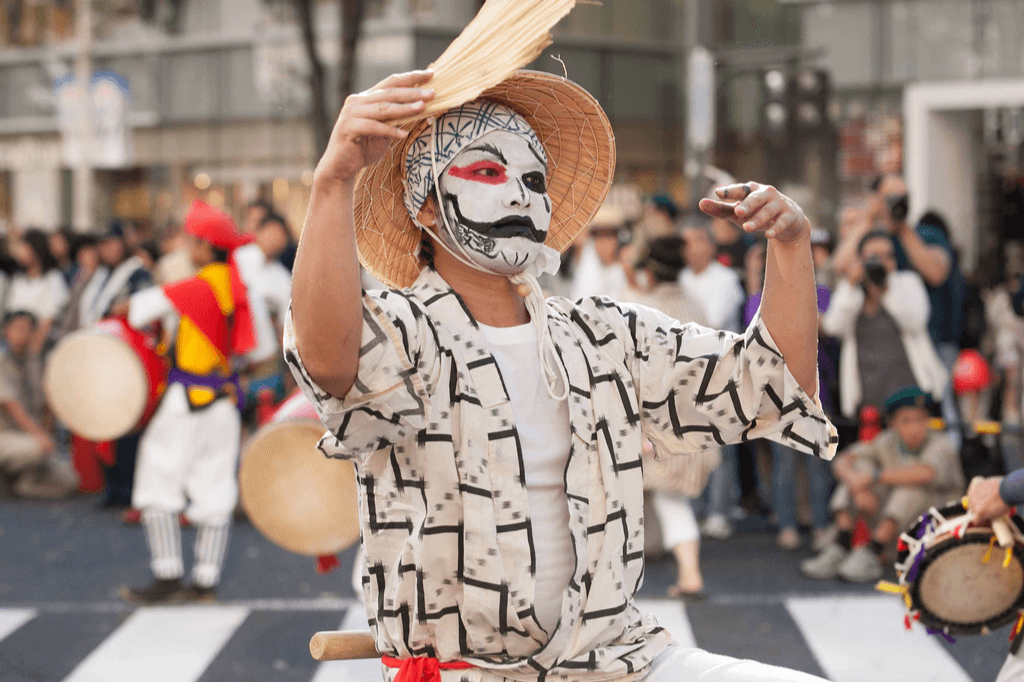
Gion Matsuri Schedule Highlights
The festival is mainly split into 2 parts, the early festival and the after festival.
July 1st – The festival officials hold a meeting (Kippu-iri) to decide the details of the festival.
July 2nd – A special lottery, Kuji torishiki, is held at Kyoto city hall to decide the order of the floats in the parade for July 17th.
July 5th – The Chigo do a special performance at designated meeting spots.
July 7th – The Chigo of Ayagasaboko visit Yasaka Shrine to pray for the success of the Gion Matsuri.
Early Festival (Saki-matsuri)
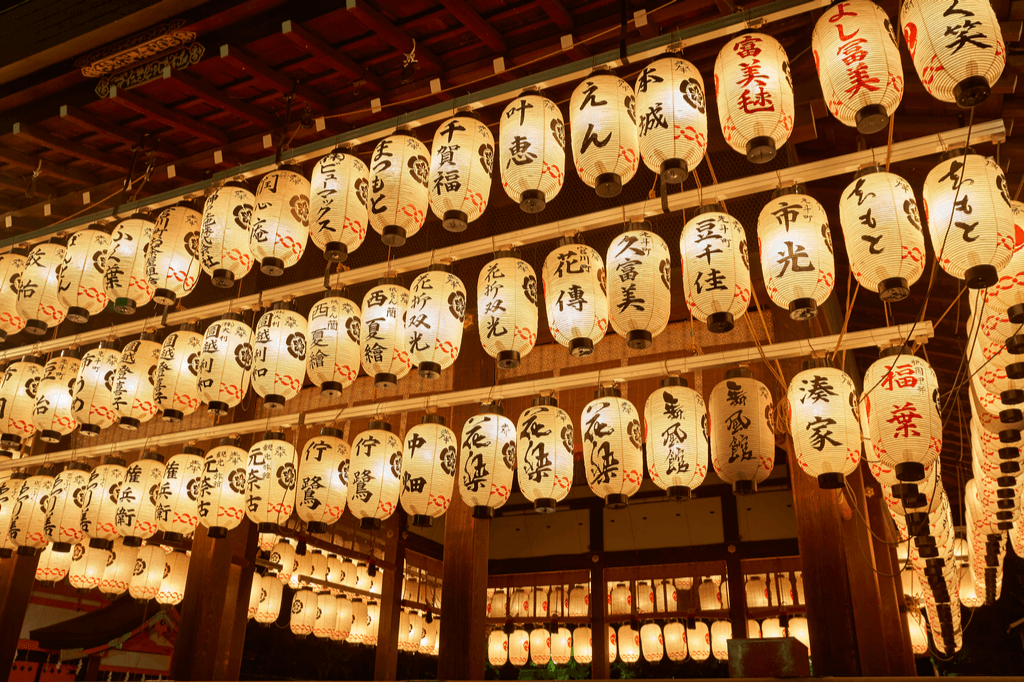
July 10th – Paper lantern reception (Omukae-chouchin): The 2/3s of the floats begin to get constructed, and Shinto priests purify the Mikoshi (Mikoshi-arai) with water from the Kamogawa river.
July 11th to 13th – Construction of the floats continues. The Chigo of Naginataboko and Kuse Shrine visit Yasaka Shrine on the 13th.
July 14th to 16th – Yoiyama festivities (night street parties): You can enjoy street food from Japanese street vendors and see the floats with their lanterns lit.
July 17th – Yamaboko Junko Parade: 23 Yamaboko floats parade around the city. There’s also Mikoshi Togyo where three Mikoshi leave Yasaka shrine and go to Otabi-sho for a week. This is considered the most important ritual of the festival.
After Festival (Ato-matsuri)
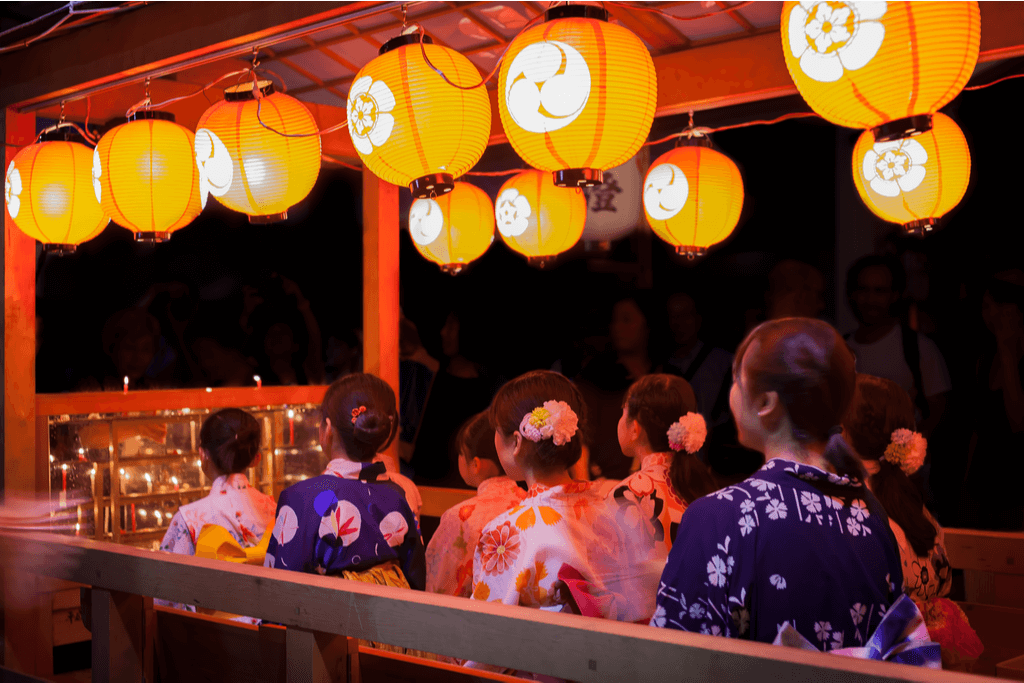
July 18th to 21st – Building of the remaining floats.
July 21st to 23rd – Even more Yoiyama festivities (night street parties).
July 24th – The Yamaboko float parade, the hanagasa (“flower parasols”) parade, and the Kankosai parade where the Mikoshi from the 17th are returned to Yasaka Shrine.
July 28th – Purification of the Mikoshi with water from the Kamogawa river on Shijo Bridge.
July 31st – The end of the festival. People walk through the chinowa wreath at Eki Shrine to purify themselves.
There is plenty to enjoy at Gion Matsuri, so make sure to time your next visit to Kyoto to check out some of the festival’s main events. Let us know the one you want to experience most in the comments below!


